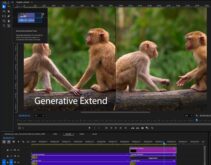If you’re producing DVDs or Blu-ray discs with Adobe Encore, you probably know that you can easily convert the authored DVD to a Flash project that you can upload to a web site. If you don’t know, or if you don’t work with Adobe Encore, read on – you might find a very useful technique for getting client approvals or supplementing the DVD experience with an online one.
In terms of workflow, you create your DVD as normal – here’s the simple 3 video DVD that I produced of my daughter’s performances in a recent recital.

You can produce your optical disc, then, when ready to produce the web version, choose Flash for the output Format.

A bit lower in the build screen, choose a destination for the encoded files, and then whether to produce them as FLV files using the VP6 codec, or F4V files using the H.264 codec. In most instances, you should probably choose the latter.
Then choose a preset, first matching the aspect ratio of your project, and then deciding upon the video window size.
Beneath the Presets drop down list, you can see the Templates option – this is the template for the web page that Encore will build to host the Flash SWF file. Nothing exotic, but they’re all functional and presentable.
Further down the interface, you can choose to produce a Flash SWF file, or upload the entire project directly to your web server.
Uploading the Files
During rendering, Encore produces the files you see below. You upload them to a folder on your website and create a link to the index.html file. You don’t need to know anything about Flash, and not much about web authoring – if you can create a link to an HTML file, you’re good to go.

That’s pretty much it. You can see the presentation that I made from this project by clicking here. And the mispelling in the title was my error, not Encore’s.
I should say that I’ve only tested this function with relatively simple DVD authoring projects (most of my projects are fairly simple from an authoring perspective), and this function has worked well. If you plan to use motion menus and advanced features like subtitles and alternative audio tracks, you probably should run some tests to make sure that Encore performs as advertised with these features.
Overall, it’s nice to know that there’s an easy way to send a project to a client for approval, or to provide a nice value add for optical discs that you produce for clients. This is nothing new, by the way, it’s been around since (at least) CS4. Still, if you didn’t know it was there, now you do.
 Streaming Learning Center Where Streaming Professionals Learn to Excel
Streaming Learning Center Where Streaming Professionals Learn to Excel








